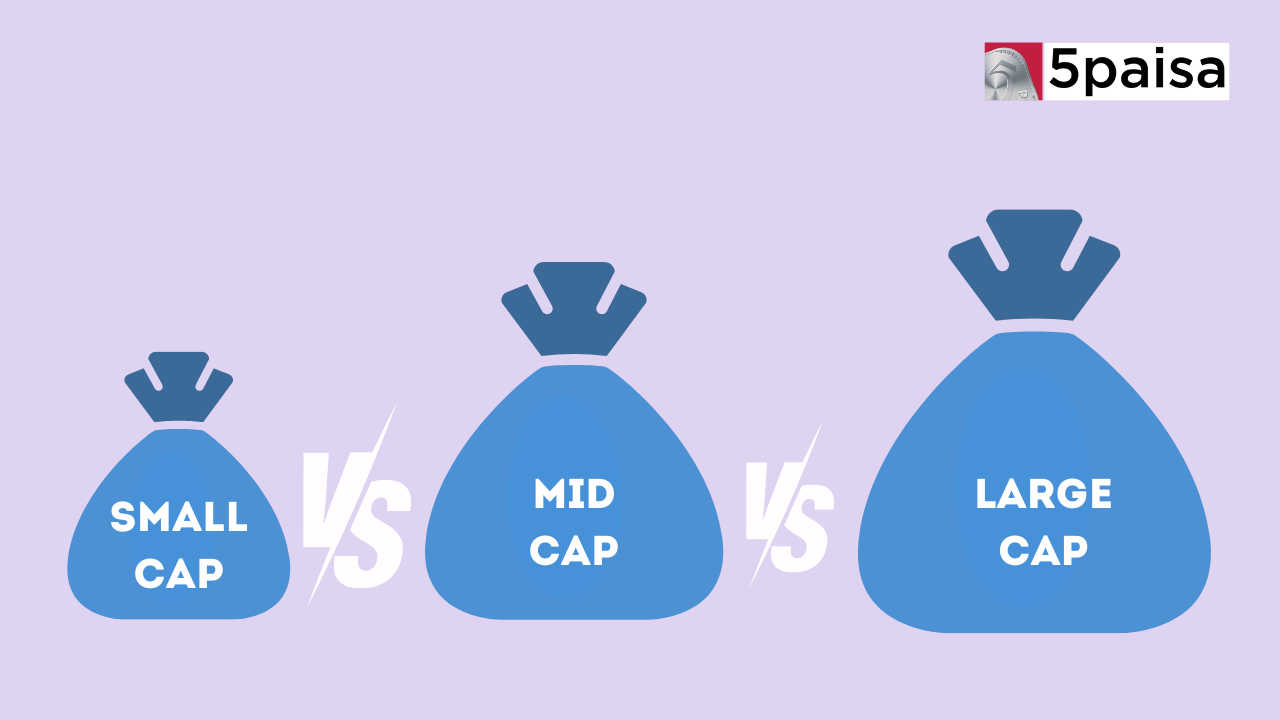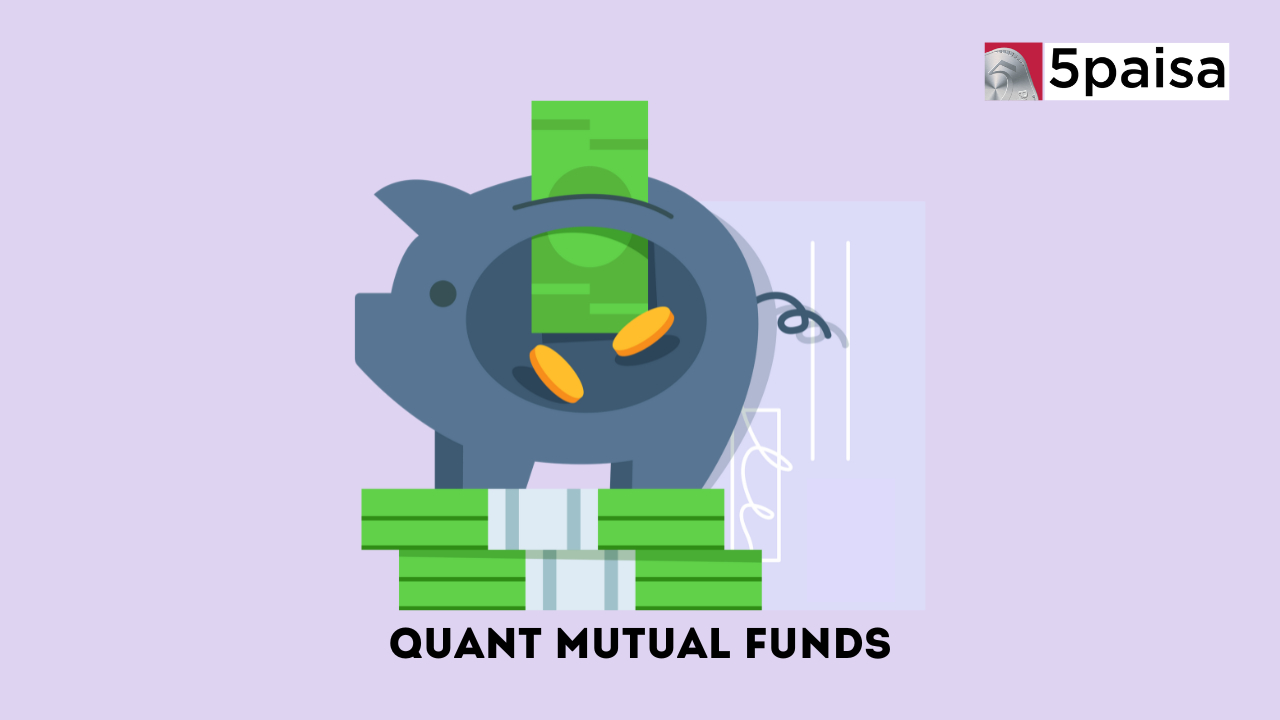List Of Maharatna Companies In India
What Are The Difference Between Large Cap, Mid Cap & Small Cap

Last Updated: 21st June 2024 - 01:03 pm
When it comes to investing in the stock market, you've probably heard terms like large-cap, mid-cap, and small-cap thrown around. But what do these terms actually mean? How do large-cap stocks differ from mid-cap and small-cap stocks? And why does it matter for your investment strategy? Let us understand.
What Is Market Capitalisation?
Before we discuss the specifics of large-cap, mid-cap, and small-cap stocks, let's first understand market capitalisation. In simple terms, market capitalisation (or market cap) refers to the total value of a company's outstanding shares.
Here's how it works: Company XYZ has 10 million outstanding shares, and each is currently trading at ₹100. To calculate the company's market cap, multiply the number of outstanding shares (10 million) by the current stock price (₹100). In this case, Company XYZ's market cap would be ₹1,000 million or ₹100 crore.
Market cap is important because it gives you a quick way to gauge a company's size. Large companies with lots of outstanding shares will have a higher market cap than smaller companies with fewer shares. Generally, companies with higher market caps are considered more stable and established, while those with lower caps are considered more risky and growth-oriented.
According to SEBI (Securities and Exchange Board of India) guidelines, there are three main market cap categories in India:
1. Large Cap: Companies ranked 1st to 100th in terms of full market capitalisation
2. Mid Cap: Companies ranked 101st to 250th in terms of full market capitalisation
3. Small Cap: Companies ranked 251st onwards in terms of full market capitalisation
Now that we have a basic understanding of market cap let's examine each of these categories more closely.
What Are Large, Mid, and Small Cap Stocks?
Large-Cap
Large-cap stocks represent the biggest and most well-established companies in the market. In India, SEBI defines large-cap companies as those that rank from 1st to 100th in terms of total market capitalisation.
Some common characteristics of large-cap stocks include:
● Well-established businesses with a long history of operation
● Strong brand recognition and market share in their respective industries
● Stable revenues and earnings growth
● Often pay regular dividends to shareholders
● Tend to be less volatile during market fluctuations compared to mid and small-caps
Mid-Cap
As the name suggests, mid-cap stocks fall between large caps and small caps. In India, SEBI categorises companies ranked from 101st to 250th by total market cap as mid-caps.
Some characteristics of mid-cap stocks are:
● Established companies but not as big as large caps
● Track record of strong growth and market share expansion
● Potential to become future large caps if they continue to perform well
● Higher growth prospects compared to large caps but also higher risk
● More volatile than large caps but less than small caps
Small-Cap
Small-cap stocks round out the market-cap universe. In India, SEBI defines small-cap companies as those that rank 251st and below in terms of total market capitalisation.
Typical traits of small-cap stocks include:
● Younger companies in an early stage of development and growth
● Often serve niche markets or have a regional rather than pan-India presence
● Significantly higher growth potential than large and mid-caps
● But also comes with much higher risk and volatility
● Limited information and very low analyst coverage
● May have low trading liquidity, which can cause large price swings
Key Difference Between Large Cap, Mid Cap And Small Cap Funds
| Aspect | Large Cap Funds | Mid Cap Funds | Small Cap Funds |
| Company Type & Stature | Well-established, stable | Established, growth potential | Emerging, high growth potential |
| Market Capitalization | ₹20,000 crore or more | ₹5,000 crore to ₹20,000 crore | Less than ₹5,000 crore |
| Volatility | Generally low | Moderate | High |
| Risk | Lowest | Medium | Highest |
| Returns on Investments | Stable and steady | Potential for higher returns | Potential for highest returns, but more volatile |
| Investment Horizon | Long term | Long term | Long term |
| Suitability | Lower risk tolerance | Moderate risk tolerance | Higher risk tolerance |
| Liquidity | High (easier to buy/sell) | Lower (may be less tradable) | Least (may be difficult to buy/sell) |
How To Diversify Your Portfolio With Large Cap, Mid Cap, And Small Cap Stocks?
Now that we know the difference between large, mid, and small-cap stocks, how can we use this information to build a diversified portfolio? The key is to have the right mix of each category based on your risk profile, financial goals, and investment horizon.
Here are some general guidelines:
● Conservative investors with low-risk appetite: Opt for a large cap-heavy portfolio with 70-80% in large-cap stocks, 20-30% in mid-caps, and minimal or no exposure to small caps. This will provide stability and regular income.
● Moderate investors with a medium risk appetite: Choose a balanced mix of 50-60% in large-caps, 30-40% in mid-caps, and 10-20% in small-caps. This offers a combination of stability and growth potential.
● Aggressive investors with high-risk appetite: Choose a more growth-oriented portfolio with 30-40% in large caps, 40-50% in mid-caps, and 20-30% in small caps. Be prepared for higher volatility in returns.
The actual proportion will vary based on your specific situation and goals. It's best to consult a financial advisor to create a personalised asset allocation strategy.
Also, diversification doesn't end with a market cap. It's equally important to diversify across sectors, geographies, and asset classes. Don't put all your eggs in one basket, as the saying goes.
Popular Indices for Tracking Large Cap, Mid Cap, and Small Cap Stocks
If you're interested in tracking the performance of large-cap, mid-cap, and small-cap stocks in India, there are several benchmark indices you can follow:
Large-Cap Indices
● Nifty 50: Tracks the 50 largest companies listed on the National Stock Exchange (NSE)
● S&P BSE Sensex: Tracks the 30 largest companies listed on the Bombay Stock Exchange (BSE)
Mid-Cap Indices
● Nifty Midcap 100: Tracks the next 100 companies by full market cap on the NSE
● S&P BSE Midcap: Tracks a representative sample of mid-cap stocks on the BSE
Small-Cap Indices
● Nifty Smallcap 100: Tracks 100 small cap companies selected from the top 150 stocks on the NSE by full market cap
● S&P BSE Smallcap: Tracks a representative sample of small-cap stocks on the BSE
In addition to these, sector-specific indices track companies of different sizes within a particular industry, such as banking, IT, FMCG, etc.
Conclusion
Understanding the difference between large-cap, mid-cap, and small-cap stocks is crucial for creating a well-rounded investment portfolio. Each category offers a unique risk-reward profile that can cater to different investor preferences. By diversifying across these market cap segments, you can potentially balance risk and optimise returns to meet your financial goals. However, always remember to research, consult with a financial advisor, and invest based on your circumstances.
Frequently Asked Questions
Are there specific sectors where large-cap, mid-cap, or small-cap stocks dominate?
How do large, mid, and small-cap stocks react to market news and events?
Which type of market cap is the safest investment?
- Flat ₹20 Brokerage
- Next-gen Trading
- Advance Charting
- Actionable Ideas
Trending on 5paisa
Indian Stock Market Related Articles
Disclaimer: Investment in securities market are subject to market risks, read all the related documents carefully before investing. For detailed disclaimer please Click here.
 5paisa Research Team
5paisa Research Team
 Sachin Gupta
Sachin Gupta




